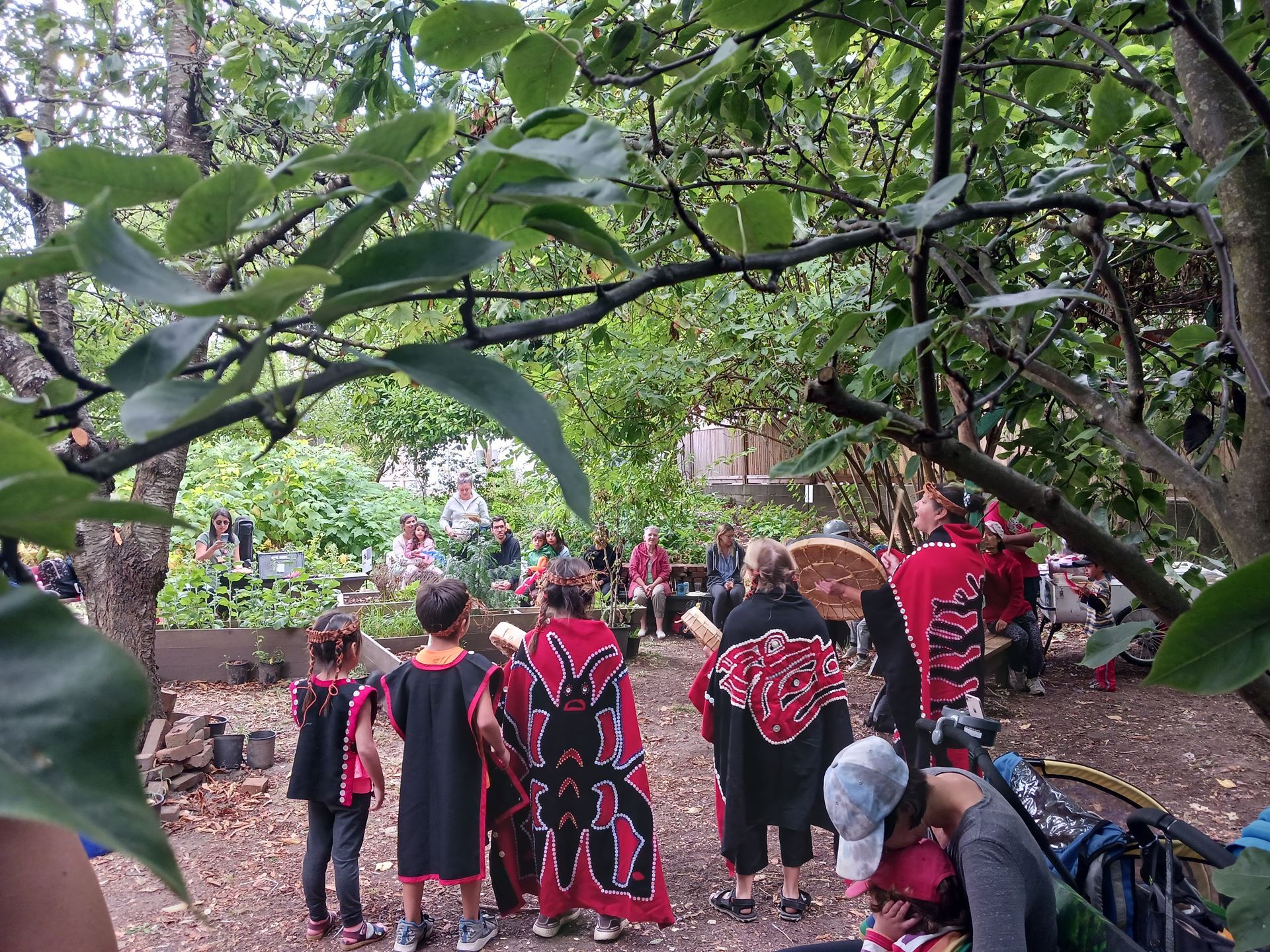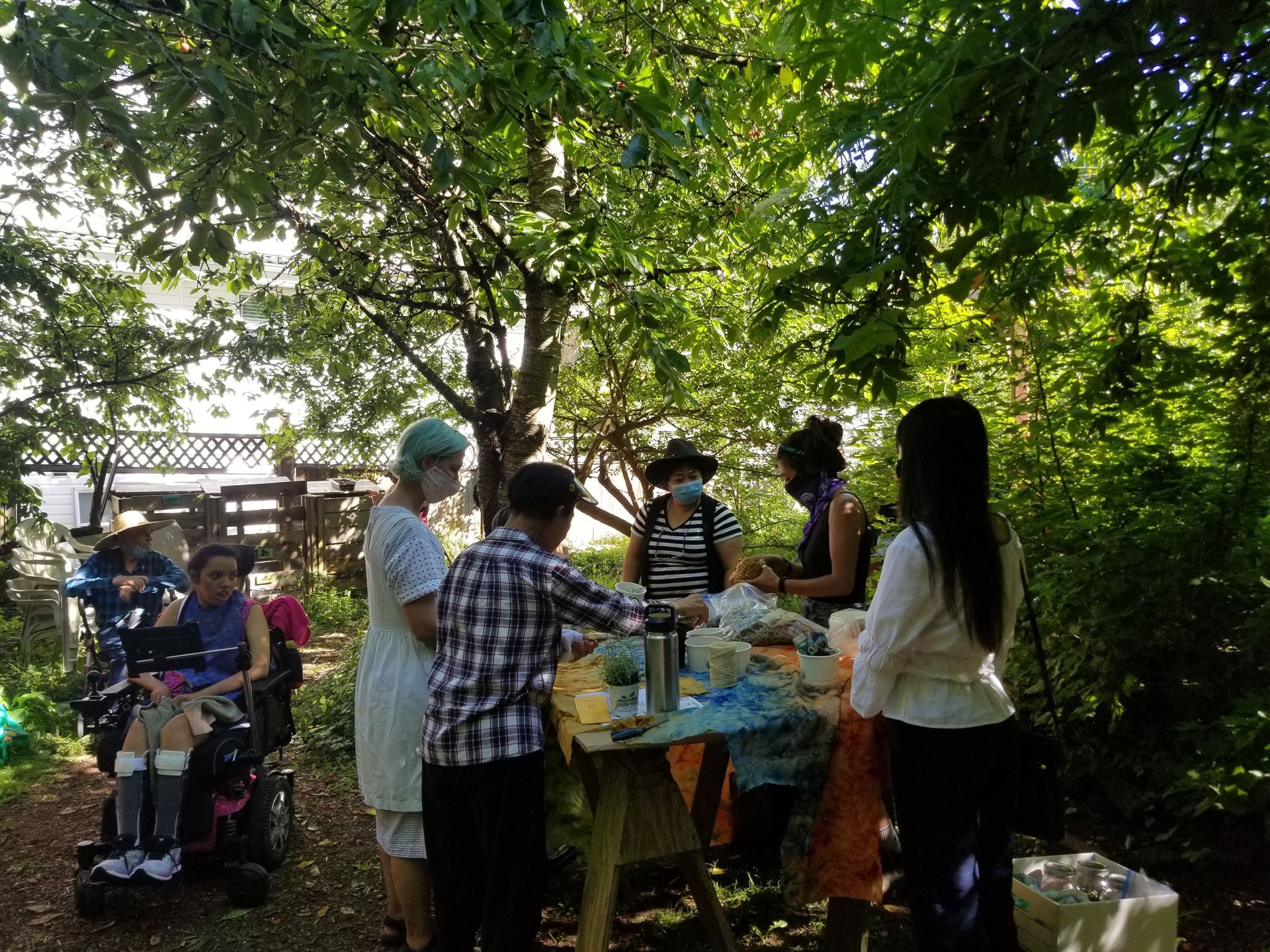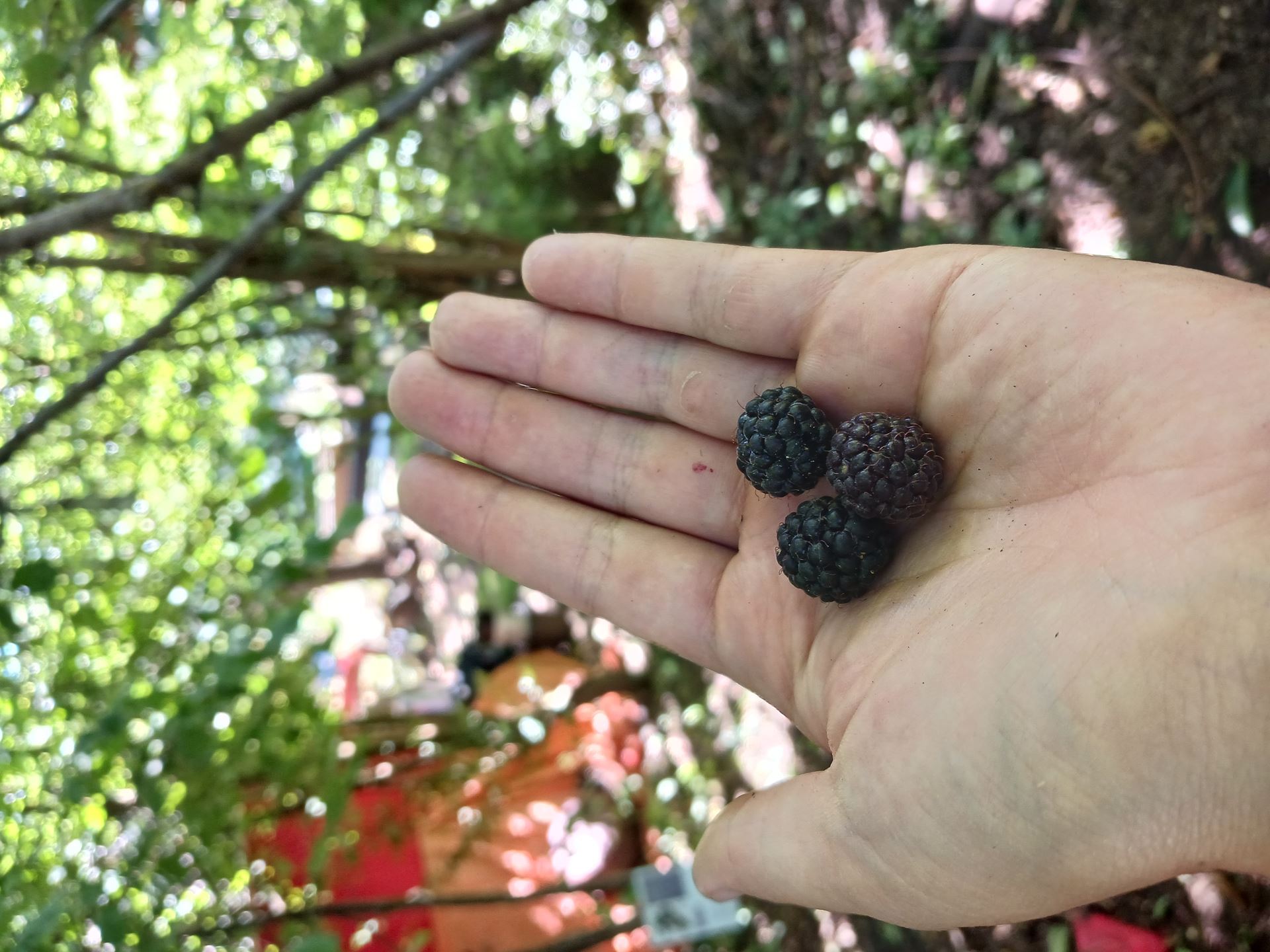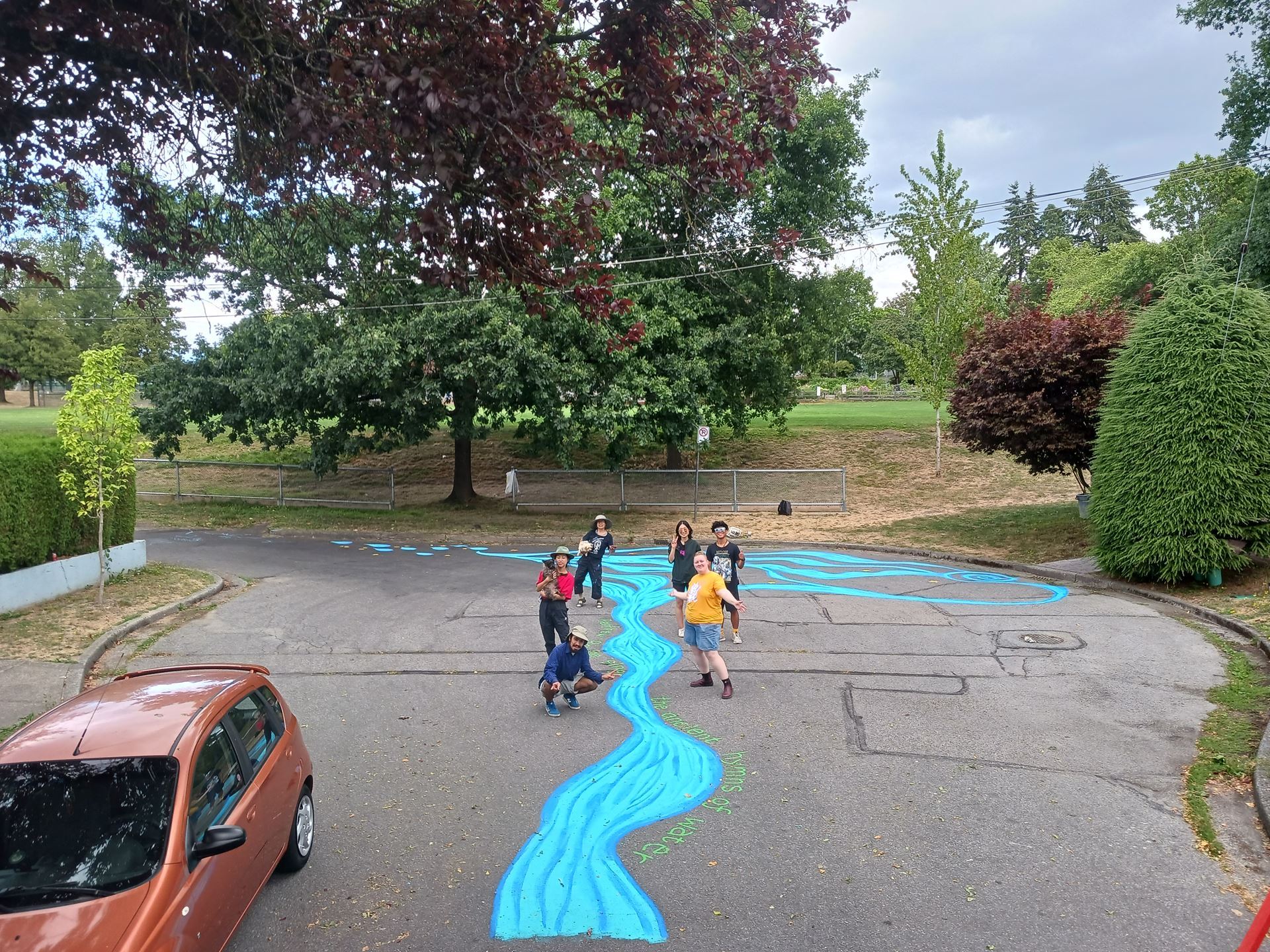2022 Greener Greenspace Profile
Norquay Food Forest
Located in Renfrew-Collingwood in Vancouver, BC, Norquay Food Forest is located on the headwaters of the Renfrew Ravine and is an important greenspace where community members gather to nurture the forest, grow food and medicine, and host workshops, ceremonies, walks and celebrations.
Design and Process The Norquay Food Forest is stewarded by Renfrew Collingwood Food Justice, a Vancouver organization that promotes learning and leadership around sustainable growing, local food, multicultural food traditions, and healthy eating. The Food Forest is a community-based greenspace that integrates permaculture design and the traditional ecological knowledge of Indigenous communities. The forest contains a plethora of native fruit and nut trees, berries, and many edible and medicinal plants including Skunk Cabbage, Labrador Tea, Camas and Salmon Berries. The diversity of plant and tree species provides an abundance of food and medicines for the community to preserve, eat, and/or turn into salves, candles, and tinctures. Over the past few years, the focus has been on integrating more medicinal plants into the food forest. In the last year, they welcomed additional native plants that are important to the Host Nations in the region. Renfrew Collingwood Food Justice acknowledges what the land was like before colonization and with this perspective, they understand that native plants prefer to grow in complex plant communities. As such, plants are left to grow and lean into each other as they would in the forest, which in practice means layering roses beneath elderberry, tucking blueberries into shaded hedges, and letting hazelnuts lean on the native plum trees. The emphasis is on supporting symbiotic relationships and removing obstacles from species' paths. Due to the dense tree cover and abundant water that is present at the site, the food forest remains cooler in temperature and higher in air quality than the surrounding neighbourhood. Additionally, because of the increased biodiversity, the root systems are stronger, which has kept the topsoil in place during times of high wind and dry air. Even though there was a serious drought last year, the forest flourished with little to no watering due to the location and abundance of underground water. This allowed pollinators, birds, squirrels, mice, and more animal kin to find food, water, and shelter in the forest. To decrease the environmental footprint and to circulate resources on site, the stewards revamped the composting system. They also built a hugelkulture in the garden to reduce the amount of green waste taken offsite and to increase soil health and bioactivity. These combined projects provided opportunities to educate the community and build workshops around compost, mushroom growing, and other ecological practices to further support these practices beyond the boundaries of the food forest. With the focus being native plant species, it is extremely rare that there is a need to amend the soil. Most native plants prefer neutral to acidic soils and many berries grow through rhizome spreading which generally can be burned by synthetic fertilizers. The preference is to mulch with the plant’s own debris and only bring in organic woodchips when necessary. Many plants such as Elderberry have their own systems of die-back annually to provide energy for their new growth. There are some non-native fruit trees that are occasionally provided with organic fish fertilizer to mimic the ways in which bears bring oceanic nitrogen to the forest. Community Collaboration The Norquay Food Forest was conceived as a learning space by local residents and neighbourhood associations to demonstrate regenerative, organic and innovative growing methods. As a community hub, the food forest is a welcoming outdoor meeting space to host celebrations, ceremonies, and workshops with members of the community. The Food Forest is open for all to enjoy, although special effort is made to support Indigenous, Black, and People of Colour to access the forest and take medicines, seeds, and food. In the summertime, an Indigenous foodlands manager stewards the forest together with a team of students and two or three seasonal staff. In past years, the organization has welcomed UBC students in the Land and Food System Faculty and others to participate in stewardship and programming activities. Overall, there has been an increase in community support, interest, and knowledge about the food forest. Each year the organization plans more activities, which in turn increases community interest. Some of the activities include mushroom growing workshops, elderberry candle making and jam making workshops. In addition, they hosted activities to teach Indigenous youth about the history and importance of Camas, bears in the forest, and sacred medicines. This year, there was an increase in the amount of food to share, which also increases community bonds. As a steward of the Renfrew Ravine and the food forest, Renfrew Collingwood Food Justice uses the greenspace as an example to push for more greenways in the community. They believe that urban densification and does not need to be a death sentence for green and blue spaces. Rather, they are working with policymakers to one day daylight more of the Renfrew Ravine’s streams and build back the natural landscape in the urban environment.To read more about Renfrew Collingwood Food Justice and the Norquay Food Forest, visit their website. Watch a video of their presentation on SOUL's Ecological Land Care webinar series. |    
Photos c/o Renfrew Collingwood Food Justice |
Greener Greenspaces is a recognition program for sites from across Canada that exemplify greener greenspace stewardship. The aim of the program is to showcase examples of ecologically-focused land care as a means to inspire others and to further the movement across Canada.
See the full list of 2022 recognition recipients here
.jpg)
.JPG)